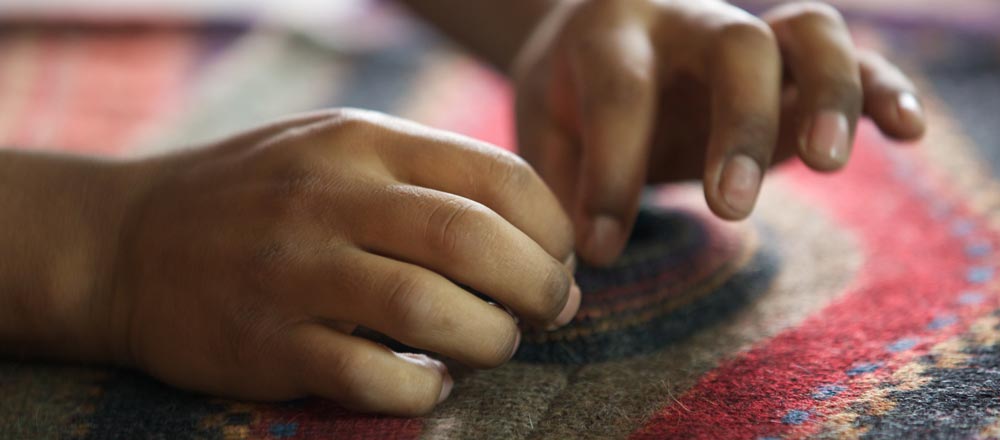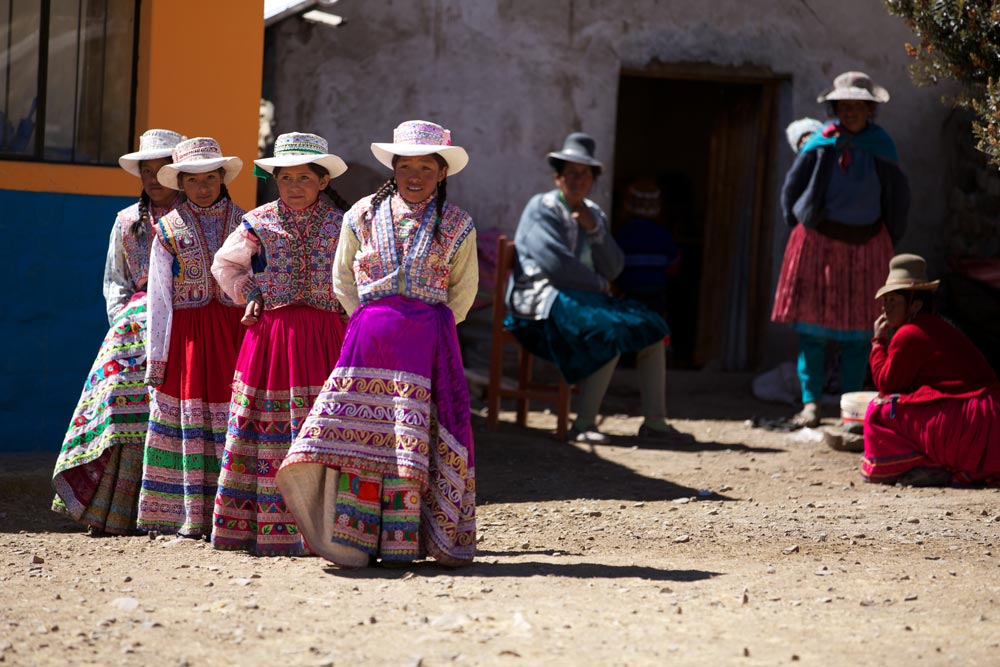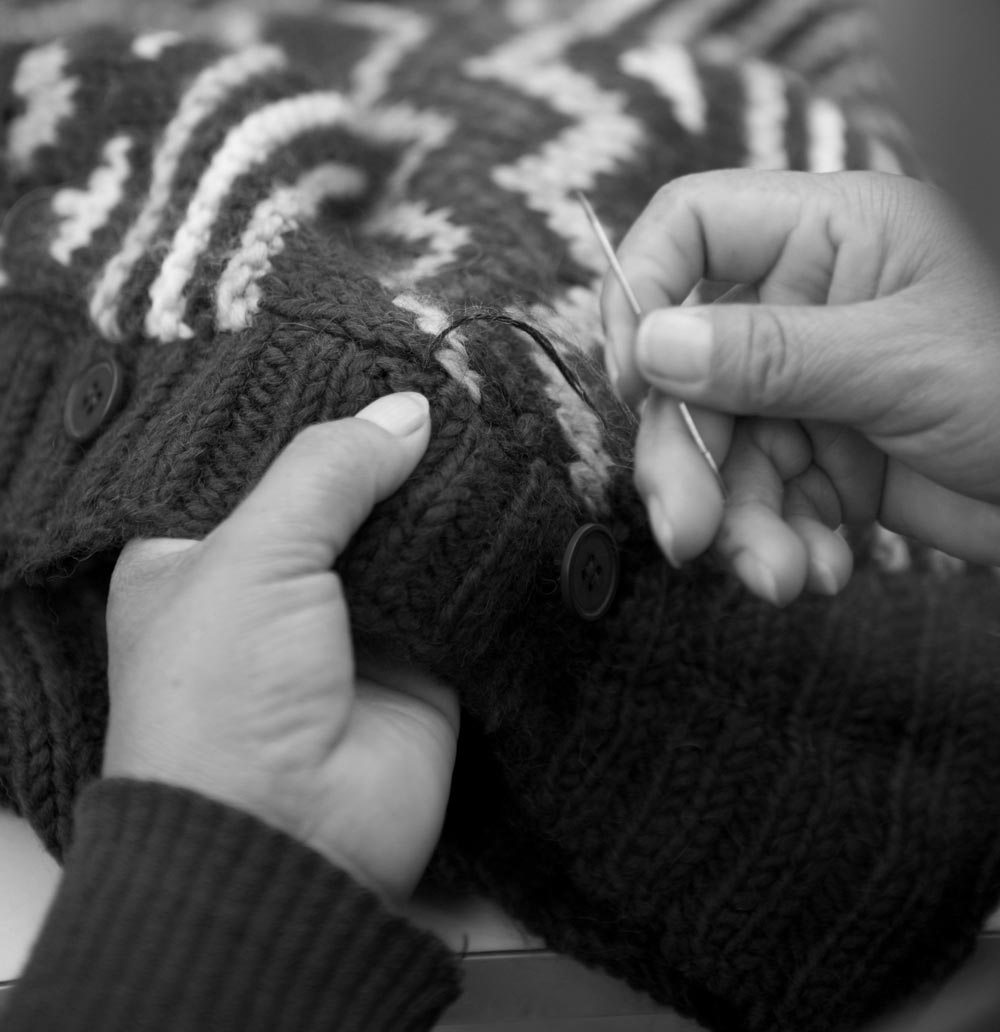
When the Spanish Conquistadores arrived in Peru in 1430, the height of the Incan Empire, they only had eyes for the abundant profusion of glittering gold. The Incan capital of Cuzco was the most opulently rich city of all the Americas. Its temples were plated with heavy gold, and whole menageries of gold animals lay inside. But of even more value to the Inca, were the rich and varied textiles they created.
 Peru has the longest continuous history of textile production in the world, going back almost 10,000 years. Invented long before pottery and just as humans started agriculture, Peruvian fiber manipulation began with simple spun fibers, moving on through cords and nets. By 500 C this rudimentary craft had developed into complex weaving, employing practically every technique known today.
Peru has the longest continuous history of textile production in the world, going back almost 10,000 years. Invented long before pottery and just as humans started agriculture, Peruvian fiber manipulation began with simple spun fibers, moving on through cords and nets. By 500 C this rudimentary craft had developed into complex weaving, employing practically every technique known today.
In Paracas, exquisite and delicate textile art can be dated as far back as 600 BC. We know of these textiles because they were wrapped in layer after intricate layer around mummies, and were thought to accompany Paracas people into the afterlife.
Ornate featherwork textiles were also highly prized by the ancient peoples of the central Andes, as well as those in the highlands and along the coast. Many examples of feathered garments and hangings patterned by feather mosaic have been recovered from the arid costal region, where they were preserved for centuries and, often, for millennia.
Though featherwork textiles are no longer common, other weaving traditions of Peru have remained strong, passed down through traditional teaching methods of observation and repetition. While modern methods of textile production have become prevalent as Peru takes its place as a leading producer of high quality textiles, the backstrap loom, still used in the Andes today, dates to pre Inca times.
Textiles continue to play an integral role in Peruvian culture. They are given as gifts in courtship, and are important parts of marriage and coming of age ceremonies. Because most of Peruvian textile creators are women, money earned from this art is more likely to go toward feeding and caring for children and families. Women are able to achieve economic independence through their skills and through fair trade wages.

Girls at a Highland school in a remote part of the Andes wearing traditional Peruvian textiles. The danced for us as thanks for helping to sponsor their school.
Creating intricate, detailed textile designs, Peruvian artisans draw from the world’s longest textile tradition. With knowledge that stretches back ten millennia, it’s no wonder that their skilled hands create some of the most beautiful, luxurious fashion in the world. It is through this rich culture of textile design that Peru has entered the world market as a source of artisan skill.




 Peru has the longest continuous history of textile production in the world, going back almost 10,000 years. Invented long before pottery and just as humans started agriculture, Peruvian fiber manipulation began with simple spun fibers, moving on through cords and nets. By 500 C this rudimentary craft had developed into complex weaving, employing practically every technique known today.
Peru has the longest continuous history of textile production in the world, going back almost 10,000 years. Invented long before pottery and just as humans started agriculture, Peruvian fiber manipulation began with simple spun fibers, moving on through cords and nets. By 500 C this rudimentary craft had developed into complex weaving, employing practically every technique known today.
0 comments